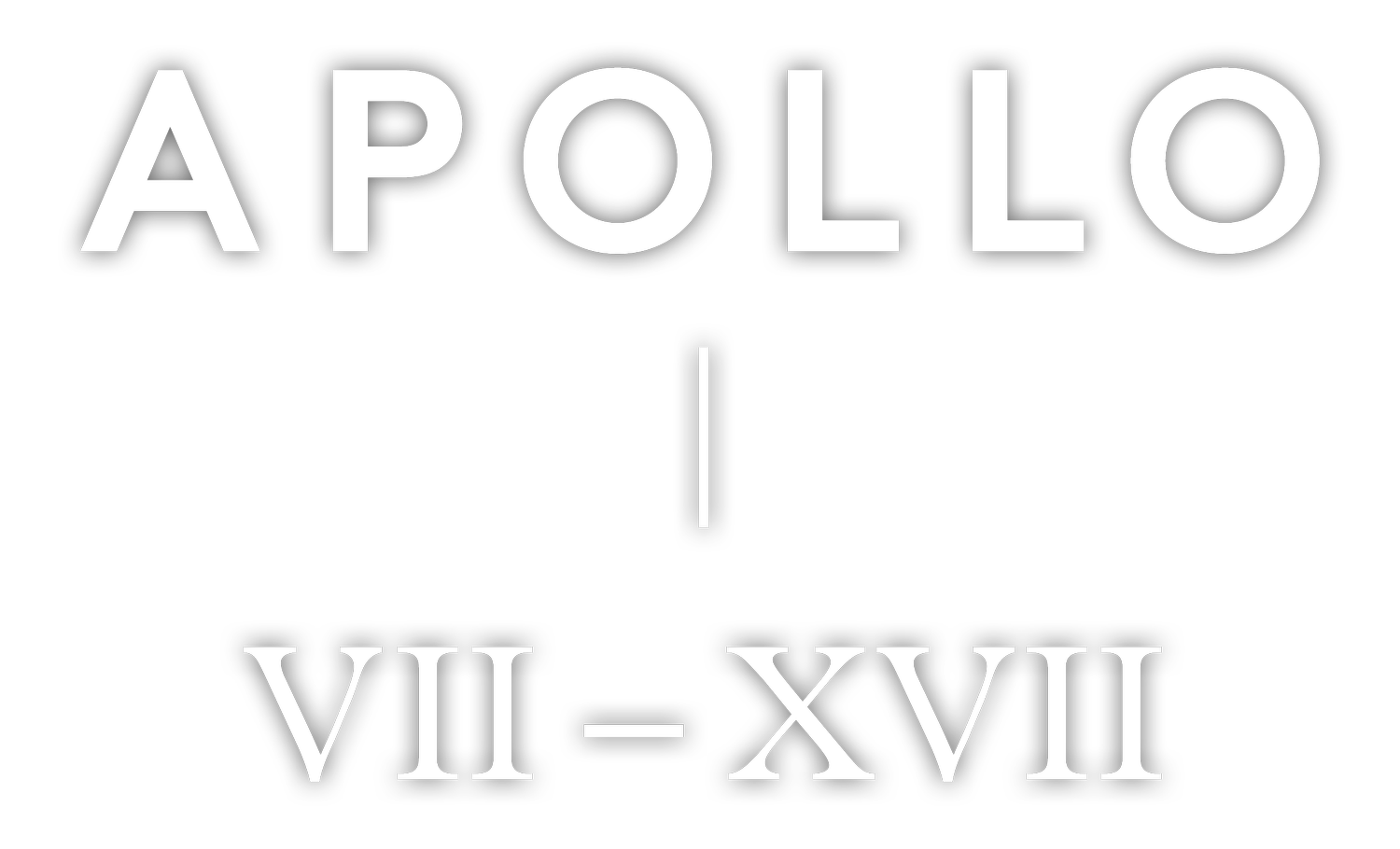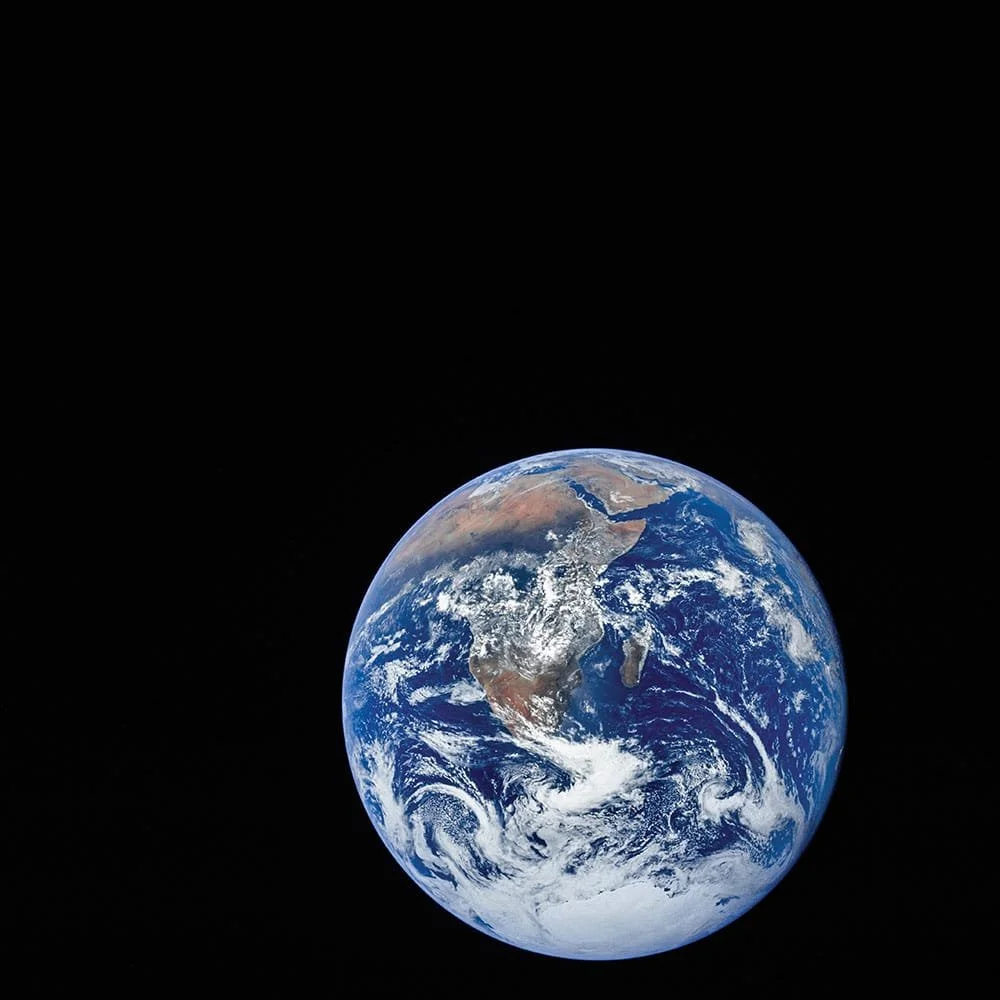The top 10 best and most famous NASA Apollo Photos ever
1) “Earthrise” — Apollo 8 (AS08-14-2383)
On 24 December 1968, as Apollo 8 rolled in lunar orbit, astronaut Bill Anders spotted Earth climbing over the Moon’s horizon and grabbed the shot now known as Earthrise. The iconic color image is AS08-14-2383; moments earlier he took the first human Earthrise in black-and-white, AS08-13-2329—both with a telephoto lens while shooting through the spacecraft window.
Essential details people search for:
Who took it? William A. Anders (Apollo 8 LMP).
When? 24 December 1968 (mission time ~75:47 MET; ~16:39 UTC in GSFC’s reconstruction).
Which lens? NASA’s analysis confirms a 250 mm telephoto for the Earthrise sequence.
Our book’s Apollo 8 chapter also explains how Earthrise reframed the mission’s meaning for the crew and the world—what Rusty Schweickart later described as “discovering Earth.”
2) “The Blue Marble” — Apollo 17 (AS17-148-22727)
Shot on 7 December 1972 a few hours after launch by the Apollo 17 crew, this is the most reproduced full-disk Earth photo in history. Official ID: AS17-148-22727. It shows Africa, the Arabian Peninsula, and Antarctica crisply lit, captured from roughly 18,000 miles (≈29,000 km) away during the outbound coast.
Our book places Blue Marble in the Apollo 17 sequence and notes its frame ID in context.
3) “Aldrin’s visor” — Apollo 11 (AS11-40-5903)
The famous visor portrait shows Buzz Aldrin on the Moon with the LM Eagle and Neil Armstrong reflected in his gold visor. Frame ID: AS11-40-5903. NASA’s archive notes it was shot on Ektachrome with a 60 mm lens (the Zeiss 60 mm Biogon used on the lunar surface cameras).
Our book calls it “one of the most famous photos ever taken,” for good reason.
4) “Aldrin on the LM footpad” — Apollo 11 (AS11-40-5869)
While still on the Lunar Module ladder, Buzz Aldrin stands on Eagle’s footpad holding the ladder just before stepping onto the Moon. Neil Armstrong shot AS11-40-5869 during the early part of EVA‑1; in the Apollo Lunar Surface Journal timeline, the "Buzz on the footpad" sequence spans AS11‑40‑5864 to 5869 at about 109:42:50 GET.
5) “The bootprint” — Apollo 11 (AS11-40-5877)
This close-up of a boot impression isn’t the “first step”—it’s part of Aldrin’s Soil Mechanics test series (AS11-40-5876–5880), with the most circulated frames 5877 and 5880. NASA’s journals confirm the sequence and its purpose.
How long will prints last? With no wind or running water, prints can persist for a very long time, though micrometeorite “gardening” slowly softens them. The American Museum of Natural History estimates at least a million years.
Our book shows both 5877 and 5880 and explains the experiment in the Apollo 11 spread.
6) “John Young’s jump salute” — Apollo 16 (AS16-113-18339)
During EVA-1 at Descartes, Commander John W. Young leapt and saluted the flag while Charlie Duke snapped AS16-113-18339—one of Apollo’s most joyful images. NASA’s caption notes the LM Orion, the Rover, and the UV camera in frame.
7) “Conrad in Bean’s visor” — Apollo 12 (AS12-49-7278)
A perfect lunar “self-portrait,” this photo shows Pete Conrad reflected in Alan Bean’s visor while Bean holds a SESC sample container. Frame ID: AS12-49-7278—confirmed both in the Apollo Lunar Surface Journal and in our book’s Apollo 12 section.
8) “A family on the Moon” — Apollo 16 (AS16-117-18841)
Charlie Duke left a plastic-encased portrait of his family on the lunar surface and photographed it as AS16-117-18841—a moving, human moment from exploration’s hardest edges.
9) “Houston, we’ve had a problem” — Apollo 13 SM damage (AS13-62-8929)
After Service Module jettison, the crew photographed the oxygen tank explosion damage. The widely reproduced view is AS13‑59‑8500, made with an 80 mm lens from a few hundred feet away and showing an entire panel blown off and other damage around the high‑gain antenna. It’s the photo that finally revealed to the crew—and the world—the full extent of what had happened.
10) The first full-disk Earth by humans — Apollo 8 (AS08-16-2593)
“Blue Marble” wasn’t the first; Apollo 8 photographed a complete Earth four years earlier. One classic frame is AS08-16-2593, taken on 21–22 December 1968 during the outbound coast and widely referenced in NASA’s image library.
What cameras did Apollo astronauts use?
Short version: Hasselblad medium-format film cameras, customized for space and, on the Moon, a chest-mounted electric data camera with a Zeiss 60 mm Biogon lens; in orbit, crews also used 80 mm and 250 mm Zeiss lenses (among others). Hasselblad details the program partnership and modifications; NASA’s equipment pages back it up.
Our book’s “Behind the Photographs” section breaks down the exact Apollo lenses (50/0.7, 60/5.6 Biogon, 80/2.8 Planar, 250/5.6 Sonnar, 500/8), film magazines, and why the gear was de-viewfindered and matte-black. It also notes explicitly that the 250 mm captured Earthrise.
Quick answers to the most-searched Apollo photo questions
Why are there no stars in Apollo photos?Because exposures were set for sunlit subjects (the Moon’s surface, suits, spacecraft). Stars are far dimmer; capturing them would require long exposures that would blow out the foreground. NASA’s teaching materials (and astronomy explainers) cover this in detail.
Is there a photo of Armstrong taking his first step?
The famous “first step” is TV video, not a still photograph. There are very few photos of Armstrong on the Moon—the only clear full-body still shows him at Eagle during panorama work (captured inadvertently by Aldrin).












